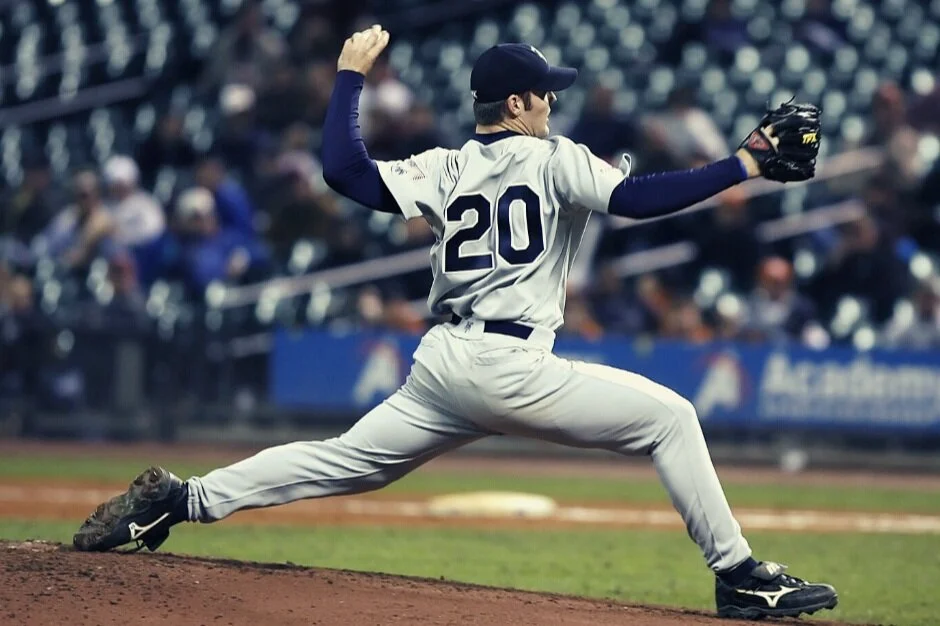Physical Therapy for Common Baseball Injuries
Baseball is America’s favorite pastime, a sport beloved and played by those of all ages from Little League and high school through college and the Major Leagues. As we start the baseball season, it’s critical to address common baseball injuries, particularly to the shoulder and elbow, that can result from overuse in a timely and effective manner. Physical therapy provides effective treatment for common baseball injuries to help players return to their previous level of function, improve body and throwing mechanics, and return players to sport as quickly and safely as possible.
Common Baseball Injuries
Baseball injuries can be acute or develop over time due to overuse. The most common baseball injuries involve the shoulder and elbow. Pitchers are highly susceptible to shoulder injuries due to the mechanics and repetitive stress of the throwing motion with 30% of pitchers experiencing shoulder pain during the season and 25% experiencing elbow pain.
Throwing the baseball is one of the fastest and most aggressive maneuvers that the human body can endure. It requires both shoulder flexibility and stability while requiring maximum motion and stabilizing strength. The shoulder is particularly vulnerable to injury as throwing creates rapid motion around the glenohumeral joint of the shoulder and places compressing and pulling forces on the shoulder’s stabilizing structures.
Poor balance and lack of muscular stability in the pelvis, shoulder blade, and lead leg can contribute to mechanical flaws in delivery and follow-through when pitching, which places stress on the throwing arm and shoulder and can lead to injury and pain. When a pitcher has good balance and muscular stability through the trunk, pelvis, shoulder blade, and lead leg, the intense forces placed on the body when pitching are controlled by the muscles of the leg and trunk. Poor technique places these forces on the smaller muscles of the rotator cuff and forearm, which are less able to sustain the force and are more prone to injury.
Six of the most common baseball injuries include:
Rotator Cuff Injury: The rotator cuff is comprised of a group of four muscles whose tendons connect and form a covering over the head of the upper arm bone where it meets the shoulder. The rotator cuff muscles coordinate the shoulder’s movement. Repetitive overhead throwing can cause the muscles and tendons of the rotator cuff to compress and become inflamed, leading to pain, tendinitis, and even a rotator cuff tear.
Labral Tear: A labral tear is a shoulder injury that occurs when the ring of cartilage that surrounds the shoulder socket is torn. Pitchers can experience a “catching” feeling in the shoulder joint when the labrum becomes loose and the entire shoulder joint can become unstable.
UCL Sprain of the Elbow: The UCL is the ulnar collateral ligament, which is located on the inside of the elbow joint and provides stability to the throwing arm. The UCL ligament becomes strained due to repetitive use or a physical impact on the elbow joint. When the UCL is sprained or strained, a pitcher may experience loss of control of pitches, pain at the inner elbow, and overall elbow joint instability.
Thrower’s Elbow: Known as medial epicondylitis or golfer’s elbow, this condition involves pain and irritation of the common flexor tendon on the inside of the elbow due to overuse.
Shoulder Instability or Impingement: Shoulder impingement is caused by pinched tendons or bursa in the shoulder, causing altered movement in the shoulder and contributing to shoulder instability. Shoulder instability and impingement are often caused by repetitive overuse. If it is severe, the shoulder can dislocate.
Knee Injury: Common knee injuries in baseball involve the ACL and MCL ligaments that stabilize the knee. If the ACL or MCL is injured, a player may hear a loud popping or snapping sensation if the ACL or MCL tears, leading to significant pain and difficulty walking.
Physical Therapy for Baseball Injuries
Physical therapy offers effective treatment for common baseball injuries to help players return to their previous level of function and return to sport as quickly and safely as possible. Physical therapists also work with baseball players to address muscle imbalances and improve throwing mechanics to reduce injury.
Physical therapy treatment for baseball injuries include:
Stretching exercises of the shoulder joint capsule and affected soft tissues
Strengthening exercises to strengthen and stabilize the trunk, muscle, leg, shoulder (rotator cuff muscles), and throwing arm. Strengthening exercises are targeted to areas of muscle weakness and imbalance that contribute to throwing dysfunction and injury
Pain management using ice and heat to alleviate pain
Manual therapy: soft tissue and joint mobilization techniques to improve range of motion and flexibility and reduce pain
Body mechanic education and instruction, including analysis of swing and pitch mechanics to improve technique and decrease stress on the shoulder and elbow
